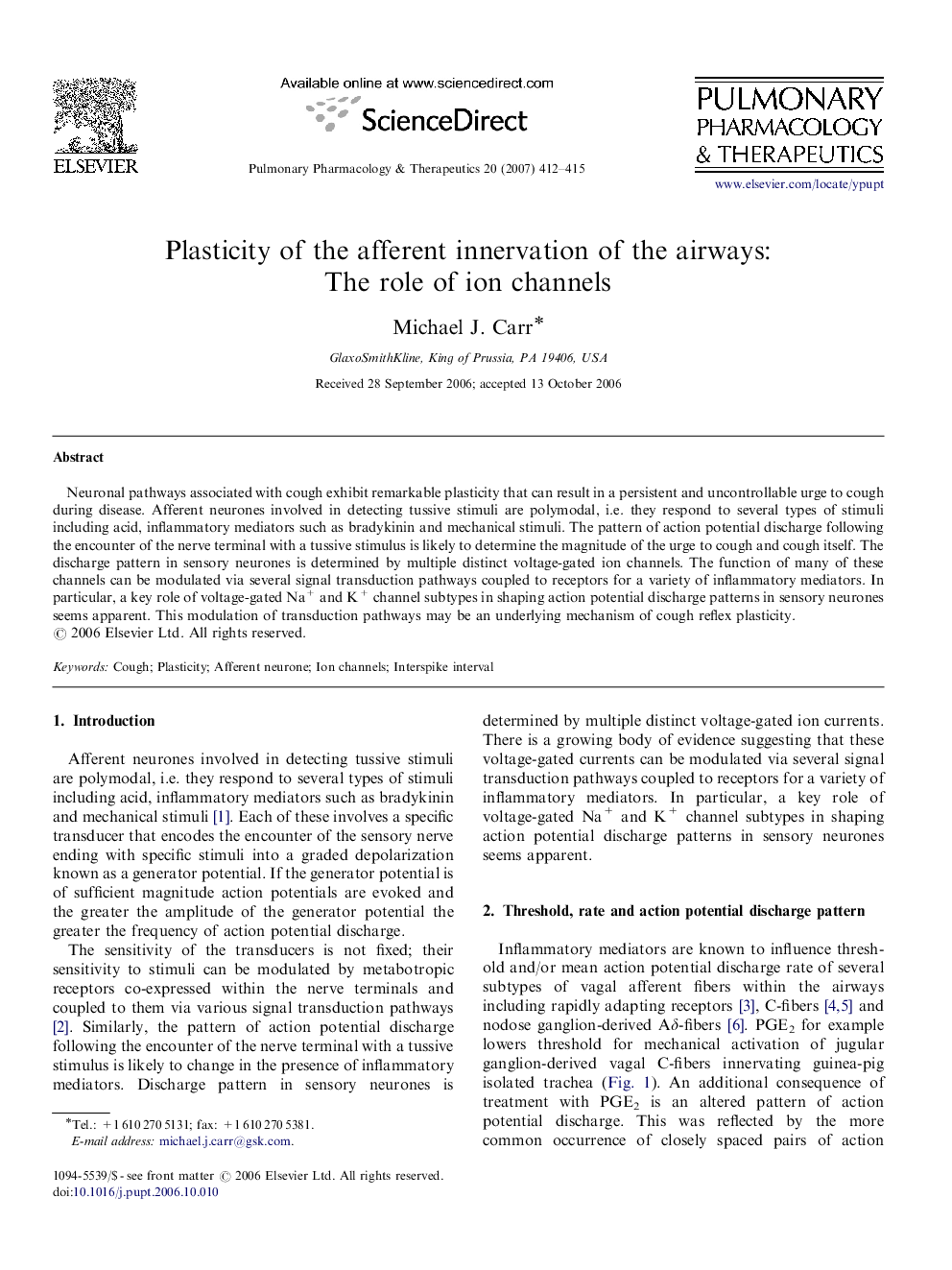| Article ID | Journal | Published Year | Pages | File Type |
|---|---|---|---|---|
| 2567911 | Pulmonary Pharmacology & Therapeutics | 2007 | 4 Pages |
Abstract
Neuronal pathways associated with cough exhibit remarkable plasticity that can result in a persistent and uncontrollable urge to cough during disease. Afferent neurones involved in detecting tussive stimuli are polymodal, i.e. they respond to several types of stimuli including acid, inflammatory mediators such as bradykinin and mechanical stimuli. The pattern of action potential discharge following the encounter of the nerve terminal with a tussive stimulus is likely to determine the magnitude of the urge to cough and cough itself. The discharge pattern in sensory neurones is determined by multiple distinct voltage-gated ion channels. The function of many of these channels can be modulated via several signal transduction pathways coupled to receptors for a variety of inflammatory mediators. In particular, a key role of voltage-gated Na+ and K+ channel subtypes in shaping action potential discharge patterns in sensory neurones seems apparent. This modulation of transduction pathways may be an underlying mechanism of cough reflex plasticity.
Related Topics
Health Sciences
Medicine and Dentistry
Pulmonary and Respiratory Medicine
Authors
Michael J. Carr,
